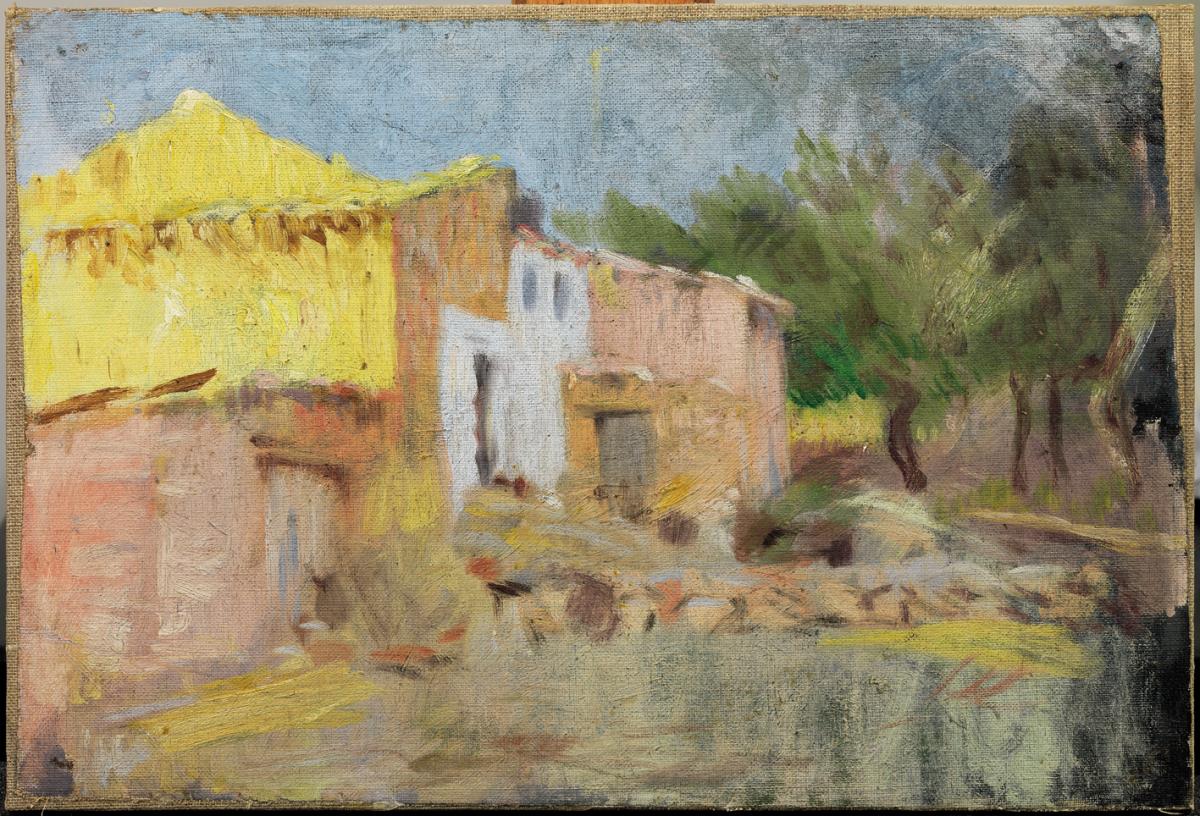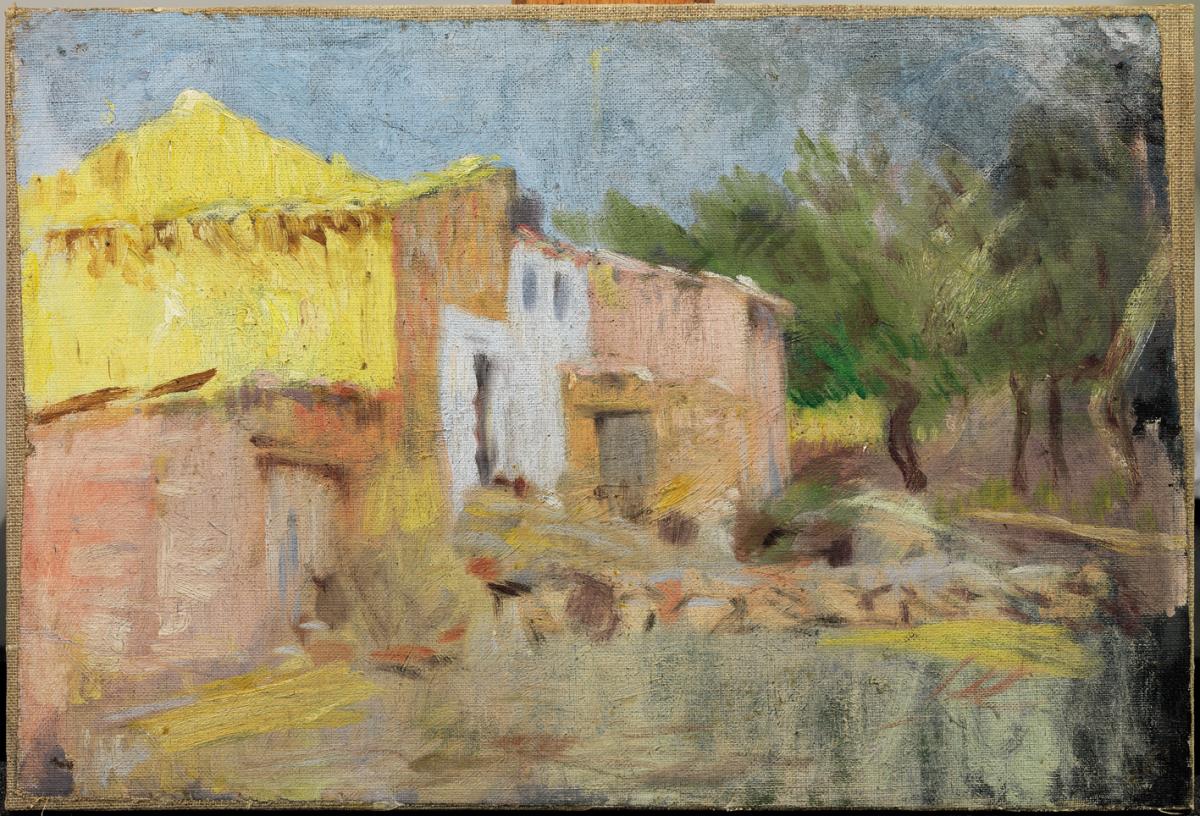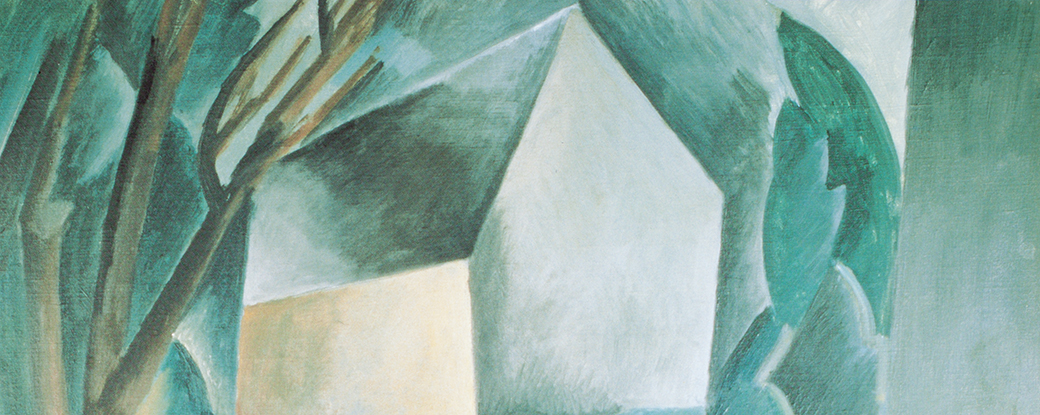Quiquet's Farmhouse

Quiquet's Farmhouse
1899
Quiquet's Farmhouse
Since rural themes first appeared in Picasso’s Malaga works, he would continue to explore this subject matter almost without interruption. In Quiquet’s Country House the range of colour is embellished and lyricism is heightened by the contrast between the solar yellow and the green of nature on a summer afternoon.
Two of Picasso’s main concerns, besides his interest in the human figure, characterised the works he produced during his sojourn in Horta, i.e. architecture and landscape, both of which converge in this composition depicting a house in the country, surrounded by trees that the artist sketched with swift juxtaposed brushstrokes. An outstanding feature is the strange geometry of the building, captured from the most difficult angle – a foreshortened view. This interest in structures appears in several oil paintings produced by Picasso in the village, such as "Windows and Eaves" (MPB 110.135) or "Houses in Horta de Sant Joan" (MPB 110.107) (both in the museum collection), where spatial organisation is enhanced by actual architectural elements. The challenge of geometry was matched by the challenge of colour, as Picasso’s Horta palette featured ochres, yellows and greens. The building itself is depicted in different tonalities: the upper left quadrant of the house is painted bright yellow, which gives it a special brilliance and reveals it was painted in the early hours of the afternoon, according to the position of the rays of the sun. In this sense the work resembles those by the Colla del Safrà art group, devoted to suburban plein air painting softened by suggestive nuances of light. In Barcelona, that same year, 1898, Joaquim Mir would present one of the group’s most iconic works, "The Cathedral of the Poor" (Carmen Thyssen-Bornemisza Collection).
Although Picasso extended his stay in Horta slightly longer, this oil painting was produced at some point between August and the first days of September, during which time he left the village with his friend Manuel Pallarès to visit the mountainous area of Els Ports, uninhabited save for a few country houses like Quiquet’s, which stands at a distance of approximately twelve kilometres from Horta. The two settled into a nearby cave and for a brief period led an almost wild existence. At that time the country house was still inhabited and it is known that Picasso met its dwellers. Today, despite being vacant, it has been refurbished.
Located in
CP Sala 031899
26.3 cm x 39.5 cm
Gift of Pablo Picasso, 1970
MPB 110.066




